Mold Flipper: How Do You Integrate with Existing Cranes and Presses in Thailand?
Handling multi-ton molds in a busy factory is a serious task. You have heavy machinery, tight schedules, and most importantly, people working in the area. A slow, inefficient mold changeover process is a bottleneck that quietly eats away at your profits. But a failed lift or an accident can be catastrophic, leading to production standstills, damaged equipment worth millions, and the constant worry about team safety. This is a problem I've seen many times in my career. The solution isn't just buying a new piece of equipment, but thoughtfully integrating it into your existing workflow. A mold flipper, when integrated correctly with your cranes and presses, can transform this high-risk, slow process into a safe, fast, and efficient operation.
Integrating a mold flipper with existing overhead cranes and presses in a Thai facility requires a three-phase approach. First, a detailed site assessment is crucial, covering the structural integrity of the floor and the crane's certified load capacity. Second, you need to establish a seamless mechanical and electrical interface, ensuring the flipper's controls are interlocked with the press and crane systems. Finally, you must implement comprehensive safety protocols, including physical guarding and sensor-based restricted zones, to comply with both international and local Thai safety standards.
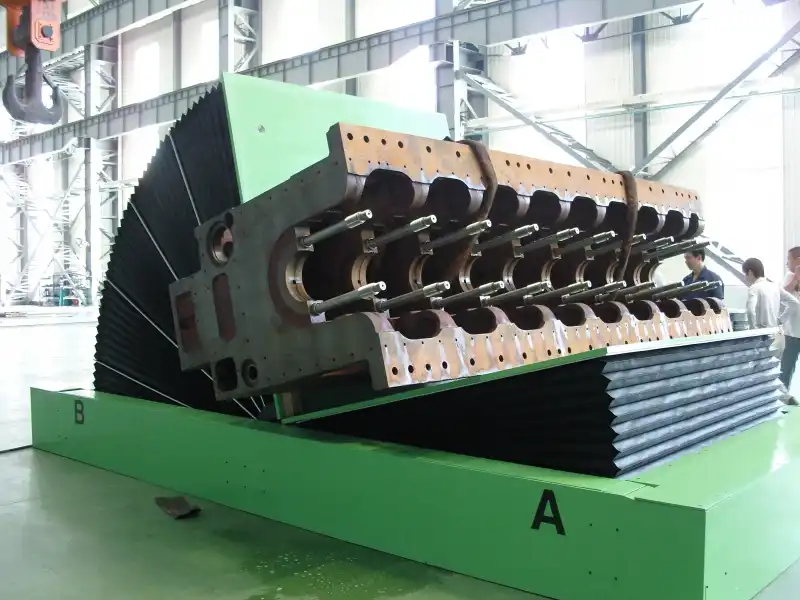
This integration is more than just placing a machine on the floor and plugging it in. I've been in this industry for a long time, first as an engineer on the factory floor and now as a factory owner myself. I know that true efficiency comes from making all your equipment work together as a single, coordinated system. It's about creating a smooth, safe, and repeatable process. Let's break down the critical questions you need to ask to ensure your mold flipper integration is a success, especially within the specific context of a facility in Thailand.
What are the key safety considerations for crane and mold flipper integration?
A heavy mold suspended in the air or in motion is a massive amount of kinetic energy. If something goes wrong, the consequences are severe. You're not just thinking about a damaged mold or a dent in the floor; you are thinking about the well-being of your team. The fear of an accident can cause operators to work slowly and hesitantly, which hurts productivity. The solution is not to avoid the risk, but to engineer it out of the process through robust, layered safety systems that create a predictable and secure working environment.
The most important safety considerations involve creating intelligent, failsafe systems. This means installing electrical interlocks that prevent the crane from entering the flipper's workspace while it is operating. You must also establish a secure physical area using safety fences and light curtains that automatically stop the machine if someone enters. Also, you have to verify that the crane, its hook, and all lifting gear are certified for the combined weight of the mold and any attachments from the flipper.
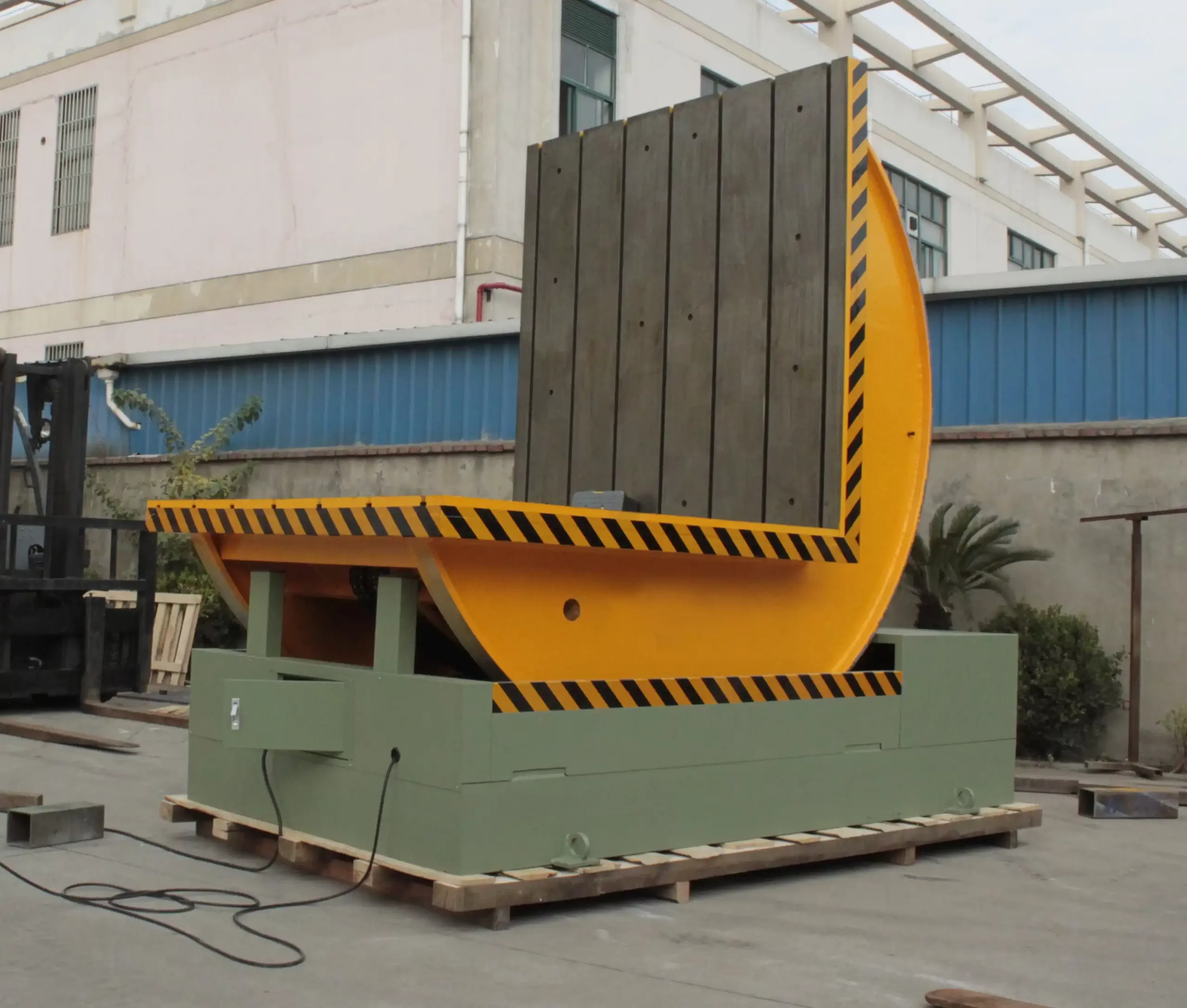
Diving Deeper into Integrated Safety
From my years of experience, I can tell you that safety is not a feature; it's the foundation of the entire system. A safe system is an efficient system because your team can work with confidence. Let's look at the specific components of an integrated safety plan.
Electrical Interlocking and Control Hierarchy
This is the brain of the safety system. The mold flipper's Programmable Logic Controller (PLC) must communicate with the crane's control system. This is not optional. Here is how it works: when an operator activates the mold flipper's rotation sequence, a signal is sent to the crane's control panel. This signal can disable the crane's bridge and trolley motors, preventing any movement into the designated safety zone. Conversely, if the crane is positioned over the flipper, the flipper itself should be locked out and unable to begin a cycle. This creates a simple but effective rule: only one major piece of equipment can be active in that shared space at a time. This prevents human error, which is often the root cause of accidents.
Physical Guarding and Zone Control
While interlocks are the brain, physical guards are the bones. Hard guarding, like steel mesh fencing, should define the perimeter of the mold flipper's operational area. This creates a clear, visible boundary that prevents people from accidentally walking into a dangerous zone. For the access point where the crane loads and unloads the mold, we use modern solutions like light curtains or laser area scanners. These create an invisible barrier of light. If a person or object breaks this barrier while the machine is in a dangerous state, the system immediately halts all motion. This is far superior to simply painting lines on the floor, as it provides active, not passive, protection.
Load Integrity and Emergency Preparedness
Every component in the lifting chain must be rated for the task. This starts with the flipper itself, which must have a capacity well above your heaviest mold. Then, you look at the crane's hook, the chains or slings, and the lifting points on the mold. All these need to be inspected regularly. The integration plan must also include clearly marked, easily accessible emergency stop (E-stop) buttons. There should be one on the main machine, one on the operator's control pendant, and potentially pull-cords along the safety fencing. In an emergency, anyone should be able to stop the machine instantly.
| Safety System | Function | Why It's Critical in Thailand |
|---|---|---|
| PLC Interlocks | Prevents simultaneous crane and flipper movement in the same zone. | Ensures process discipline and prevents operator error. |
| Light Curtains | Creates an invisible safety barrier that stops the machine if crossed. | Provides active protection in high-traffic loading areas. |
| Physical Fencing | Provides a permanent physical barrier to the machine's swing area. | Clearly defines the danger zone, crucial for training new staff. |
| Load Sensors | Detects overload conditions on the flipper and can alert the crane. | Prevents mechanical failure and damage to expensive molds and equipment. |
| E-Stops | Immediately halts all machine motion from multiple locations. | The ultimate failsafe, required by all international and local safety standards. |
How can you match a mold flipper's capacity and speed with existing presses?
You've decided to invest in a mold flipper to speed up your process, but you choose the wrong one. Now, your multi-million-dollar press is sitting idle, waiting for a slow flipper to complete its cycle. Or, you overspent on a machine that is far too big and fast for your needs, killing the return on your investment. This mismatch between equipment is a common and costly mistake. It creates a new bottleneck and leads to frustration on the factory floor. The only way to avoid this is through careful analysis of your current process and a clear understanding of your future needs.
To correctly match a mold flipper with your presses, you must first benchmark your current mold changeover time and set a clear improvement target. Select a flipper with a total cycle time—including loading, rotating, and unloading—that is faster than this target. Critically, ensure the flipper's load capacity is at least 20-25% greater than your heaviest current mold to account for future needs and provide a crucial safety margin.
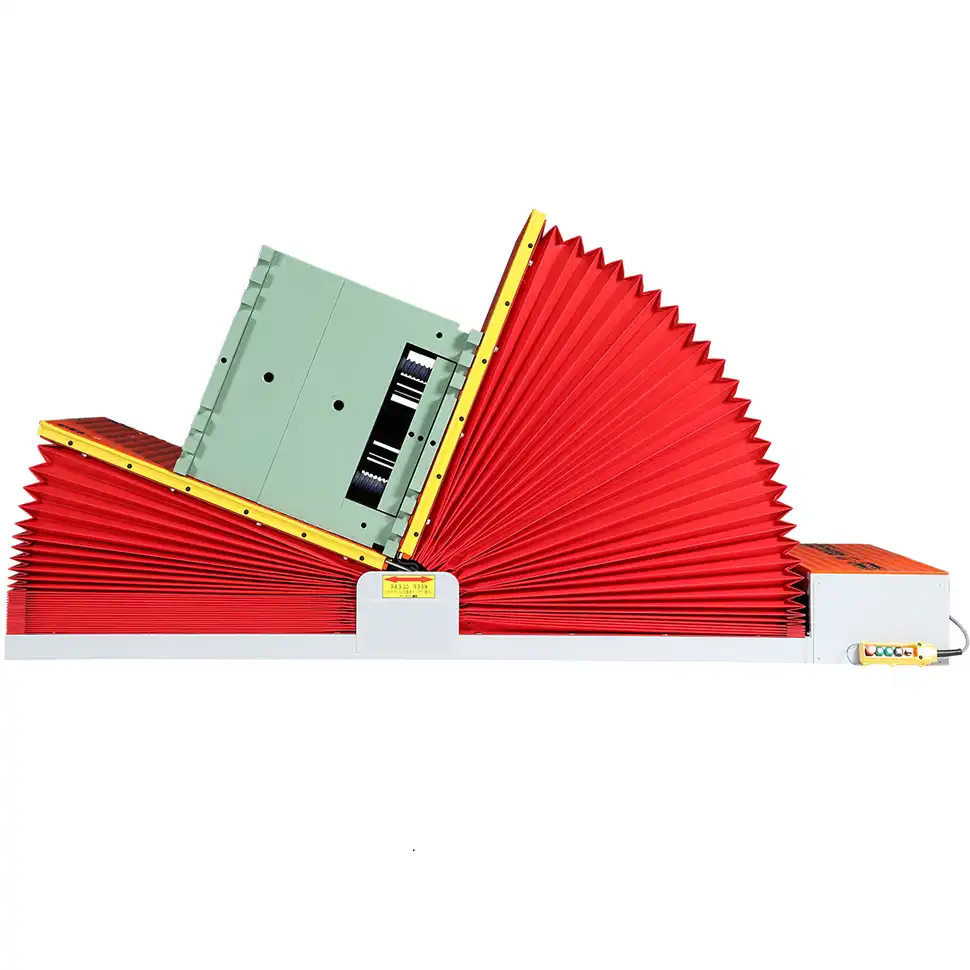
Diving Deeper into Synchronization
I see factories as a chain. The entire chain is only as strong as its weakest link. Your press might be fast, but if the mold change is slow, your overall output suffers. The goal of integrating a mold flipper is to make that link stronger.
Calculating the Right Capacity
This seems simple, but it's easy to get wrong. Don't just look at the weight of the mold itself. You must consider the total weight the flipper will handle. This includes the mold, plus any clamping plates, fixtures, or handling equipment attached to it. My advice is always this: make a list of the weights of your top five heaviest molds. Take the heaviest one and add 25%. This is your minimum capacity requirement. Why 25%? This buffer accounts for a few things. First, it's a safety margin. Second, it accounts for future growth. You may purchase larger, heavier molds in the next five to ten years. Buying a machine that can handle that future growth saves you from having to buy another machine later. It's a smart, forward-thinking investment.
Analyzing and Optimizing Cycle Time
The speed of the flipper is critical. We need to think about the entire mold change process, often called Single-Minute Exchange of Die (SMED). The goal is to reduce the time the press is stopped. The flipper's job is one part of this process. The total cycle time for the flipper includes:
- The crane placing the mold onto the flipper.
- The operator securing the mold.
- The rotation itself (e.g., 90 or 180 degrees).
- The crane lifting the mold off the flipper.
A typical rotation might take 60-90 seconds, but the full cycle could be 5-10 minutes. You need to choose a flipper that performs this entire cycle well within your target changeover time. If your goal is a 20-minute mold change, and the flipper's cycle takes 15 minutes, you have a problem. The flipper should be a fast part of the process, not the main event.
| Flipper Type | Typical Speed | Capacity | Key Advantage |
|---|---|---|---|
| Mechanical (Screw Jack) | Moderate | 1T - 50T | Very reliable, low maintenance. Good for most applications. |
| Hydraulic | Slower, very powerful | 20T - 100T+ | Unmatched power for extremely large and heavy molds. |
| Electric Servo-Driven | Fast and very precise | 1T - 30T | Excellent for automated lines requiring precise positioning. |
What structural and electrical modifications are needed for installation in a Thai facility?
Imagine this: your brand-new, 30-ton mold flipper arrives at your factory in Thailand. The truck is waiting. But then you realize the factory floor might not be strong enough to support it. Or the machine requires a 480V power supply, but your facility only has 380V. This is a project manager's nightmare. It leads to expensive delays, urgent calls to contractors, and a massive piece of equipment sitting idle. All of this can be avoided with a thorough pre-installation site survey.
For any mold flipper installation in Thailand, two primary modifications are non-negotiable. First, a civil engineer must assess the concrete foundation to confirm it can withstand the machine's static and dynamic loads. This may require reinforcing the floor. Second, your electrical system must be prepared. This usually involves installing a dedicated, correctly-sized circuit breaker and often a step-up or step-down transformer to match the machine's voltage requirements to Thailand's standard 380V, 50Hz supply.
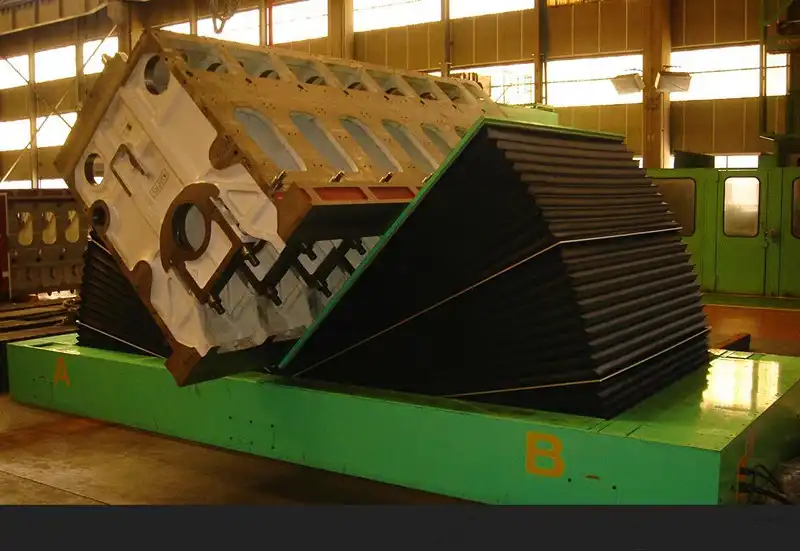
Diving Deeper into Facility Readiness
I always tell my clients that 80% of a successful installation happens before the machine even arrives. Getting the preparation right is the key to a smooth, on-time startup.
Foundation and Civil Engineering
A mold flipper concentrates a lot of weight in a small area. A 30-ton flipper holding a 20-ton mold exerts 50 tons of force on your floor. Standard factory concrete floors are often not designed for this kind of point loading. A qualified civil engineer needs to check the thickness of your concrete slab and the amount of rebar reinforcement within it. In many cases, especially for heavier machines, you will need to cut out a section of the existing floor and pour a new, dedicated foundation block. This foundation must be designed to handle not just the weight, but also the dynamic forces generated during the rotation. This is especially true in Thailand, where soil conditions can vary. Proper foundation work is a non-negotiable part of the investment.
Electrical Systems and Climate Control
Thailand's power grid typically operates at 380V, 3-phase, 50Hz. Many machines, especially those from Europe or North America, are built for different standards. You must confirm the machine's required voltage and ensure you have a transformer if needed. But it's not just about voltage. The electrical cabinet housing the PLC and drives needs protection from the environment. Thailand's climate is hot and humid. This combination is tough on electronics. The cabinet must have a high IP rating (IP54 or better) to keep out dust and moisture. More importantly, it must have adequate cooling, such as industrial air conditioners or at least powerful ventilation fans with filters, to prevent components from overheating and failing prematurely.
| Pre-Installation Checklist | Task Description | Why It's Important for Thailand |
|---|---|---|
| Foundation Analysis | A civil engineer inspects the floor and designs a foundation. | Ensures stability and prevents costly structural damage to the building. |
| Power Supply Audit | Verify voltage, phase, and available amperage at the installation site. | Prevents electrical faults and damage to the new machine. |
| Climate Protection | Specify IP-rated cabinets with cooling systems. | Protects sensitive electronics from heat and humidity, ensuring reliability. |
| Logistics Plan | Measure all doors, pathways, and crane access inside the plant. | Ensures the machine can be physically brought to its final position without issue. |
| Local Permits | Check with local Thai authorities for any required installation permits. | Ensures full compliance with regional regulations. |
How does integrating a mold flipper support digital transformation goals?
Many factory owners I speak with are focused on building a "smart factory." They are investing in sensors, data analysis, and connected systems. But sometimes they overlook how a seemingly simple machine like a mold flipper fits into this vision. They see it as a mechanical tool, a piece of steel. This leaves a "data black hole" in their production line. You can't truly optimize a process if you can't measure every part of it. A modern mold flipper is not just a dumb machine; it's a data-generating asset that can be a valuable part of your digital ecosystem.
A modern mold flipper directly supports digital transformation by integrating with your Manufacturing Execution System (MES) or SCADA platforms. It can provide a stream of real-time data, including cycle counts, operational status, motor loads, and fault diagnostics. This data is essential for enabling predictive maintenance, improving operational efficiency, and creating a detailed digital twin of your entire mold changeover process.
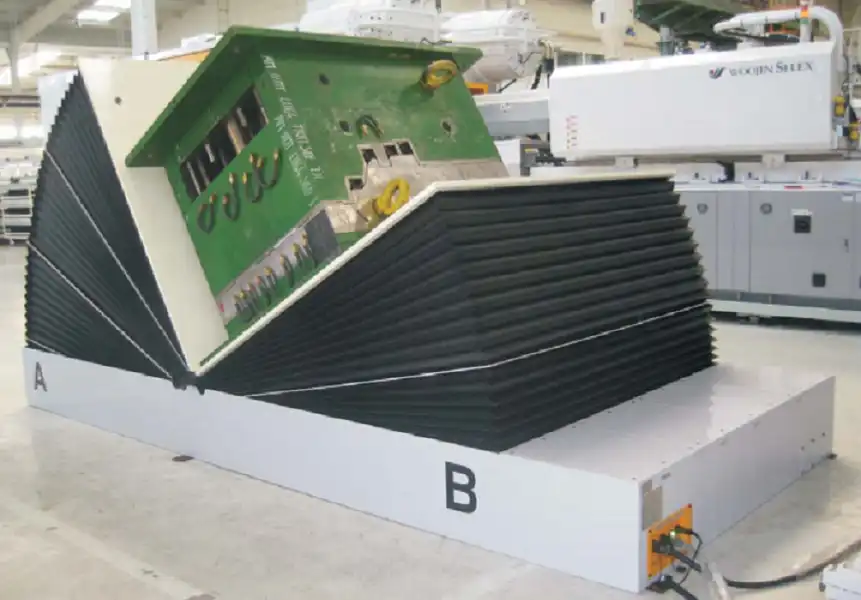
Diving Deeper into Digital Integration
When I started as an engineer, data came from a clipboard and a stopwatch. Today, data comes directly from the machine itself. This is a huge leap forward. A connected mold flipper helps you move from guessing to knowing.
Connectivity with MES/ERP Systems
A truly smart machine needs to be able to talk to your other factory systems. Modern mold flippers can do this using standard industrial communication protocols like OPC-UA or Modbus TCP/IP. This allows the flipper's PLC to send a constant stream of information to your central MES platform. What information?
- Machine Status: Is it running, idle, or in a fault condition?
- Cycle Count: How many molds has it flipped today, this week, this month?
- Operating Hours: How long has the machine been in service?
- Alarm Logs: A detailed record of every fault or warning.
This data gives managers a real-time view of what's happening on the floor. It eliminates the need for manual tracking and provides accurate data for calculating Overall Equipment Effectiveness (OEE).
Enabling Predictive Maintenance
This is one of the biggest benefits of a connected machine. Instead of waiting for something to break (reactive maintenance), you use data to predict when it might fail. IoT sensors on the flipper can monitor key indicators like motor temperature, vibration levels, and hydraulic pressure. This data is tracked over time. If the system detects a gradual increase in motor vibration, it could be an early sign that a bearing is wearing out. The MES can then automatically generate a work order to have it inspected and replaced during the next planned shutdown. This prevents an unexpected breakdown that could stop your entire production line.
| Digital Feature | Practical Benefit | Impact on Your Goals |
|---|---|---|
| MES Data Feed | Real-time visibility of machine status and cycle times. | Helps you increase产能利用率 (capacity utilization). |
| Predictive Maintenance Alerts | Prevents unexpected breakdowns by monitoring machine health. | Improves 设备有效运行时间 (equipment uptime) to over 95%. |
| Energy Monitoring | Tracks power consumption per cycle. | Supports the goal of 降低单位能耗 (reducing unit energy consumption). |
| Remote Diagnostics | Allows supplier engineers to troubleshoot issues remotely. | Reduces downtime and maintenance costs, helping to 降低运营成本 (lower operating costs). |
My take: Why a partnership approach is better than just buying a machine
When you're looking for a critical piece of equipment like a mold flipper, it's easy to focus only on the price tag and the technical specifications. Many see it as a simple transaction: you pay money, they deliver a machine. But I've learned from my own journey, from being an engineer on the floor to building my own factory, that this view is shortsighted. When the machine is complex and its role is critical, a cheap, transactional purchase can become very expensive down the road when you need support, parts, or advice. You are not just buying a machine; you are investing in uptime, safety, and efficiency for the next 15-20 years.
From my personal experience, the most successful equipment investments come from treating the supplier as a long-term strategic partner, not a one-time vendor. A partner is invested in your success. They provide in-depth expertise during the integration phase, they train your team properly, they offer proactive support long after the sale, and they work with you to solve future challenges. This collaborative relationship ensures you get the maximum possible return from your investment over the entire life of the machine.
Diving Deeper into the Value of Partnership
Building my own business, SHJLPACK, taught me the immense value of giving back and sharing knowledge. That's the core of our mission. A true partnership is built on that same principle of shared success. It goes far beyond the initial sale.
Expertise During Integration and Training
A vendor sells you a machine. A partner helps you implement a solution. A partner will send their own engineers to your site in Thailand to supervise the installation. They will work alongside your team and your local contractors to ensure the foundation is right, the electrical connections are safe, and the machine is commissioned correctly. More importantly, they will provide comprehensive training not just for the operators, but for your maintenance staff too. I remember a client in Southeast Asia who almost installed a large machine on an inadequate foundation. Our engineer spotted it during the pre-installation visit, saving them from a potential disaster. That's the value a partner brings—experience that prevents costly mistakes.
Long-Term Support and Future-Proofing
What happens in five years when you need a specific spare part, or you want to upgrade the PLC? A transactional supplier might have changed their model, or they might not even be in business. A partner, however, keeps detailed records of your specific machine. They know its history. They can provide the exact parts you need quickly. When you decide to upgrade your press or implement a new MES system, a partner can advise you on how to adapt your existing mold flipper. They help you future-proof your investment. This is critical when you think about the 15+ year lifespan of this type of heavy equipment.
A Relationship Built on Shared Goals
The best partnerships are when a supplier truly understands your business. They understand the pressures of the steel industry, the need for cost control, and the push for digitalization. They don't just offer a standard product; they listen to your unique challenges and help you find the right solution. This might mean customizing a machine's controls to better fit your workflow or suggesting a different mechanical design to save energy. It’s a proactive, collaborative relationship. You're not just a customer number; you're a partner in innovation.
| Aspect | Transactional Vendor | Strategic Partner |
|---|---|---|
| Primary Focus | The initial sale and price. | Your long-term ROI and operational success. |
| Involvement | Ships the machine and a manual. | On-site supervision, training, and commissioning. |
| Support | Reactive. You call them with a problem. | Proactive. They suggest maintenance and upgrades. |
| Knowledge | Knows their product specifications. | Understands your entire production process. |
| Relationship Goal | Complete the transaction. | Build a long-term, mutually beneficial relationship. |
Conclusion
Integrating a mold flipper is a strategic project. With proper planning for safety, capacity, and facility readiness, and by choosing a true partner, it enhances safety, boosts efficiency, and advances your factory's future.





